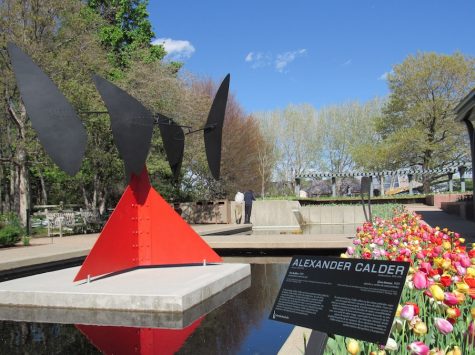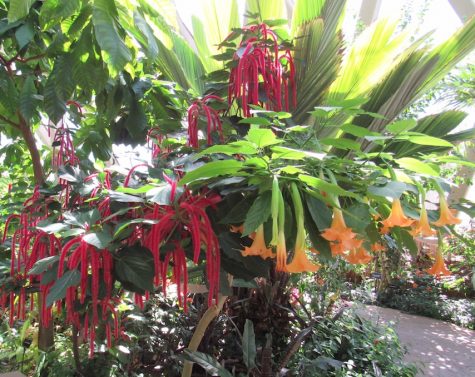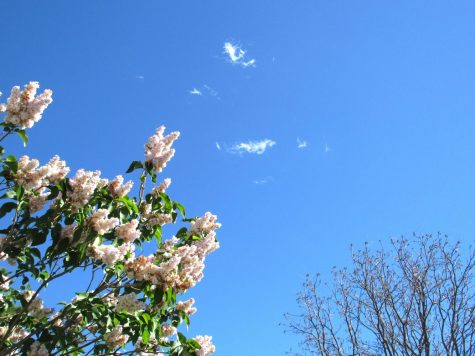Denver Botanic Gardens Bloom Despite Snowstorm
Last weekend’s snowstorm might have put a damper on many a Denverite plans but the countless blossoms that flourish around the city this time of year kept a stiff upper lip, hanging on defiantly against the blistering cold.
Letting no odds interfere, like two lovers in liaison, the young but determined buds kept pushing forward, inching closer towards the soon-to-appear sun. A binding contract with nature–renewed annually.
Balmy, the leaves looked freshly green underneath the receding remnants of yesterday’s blanket of snow on which squirrels scurried in search of their hidden nut troves.
Amid the beautiful and iridescent treasures the Mile-High City proudly presents its residents and visitors year-round, are the Denver Botanical Gardens nestled in the ornate Cheesman Park neighborhood.
Built on an antiquated cemetery—giving rise to rumors of ghosts—the 23-acre garden houses a conservatory, an amphitheater, and several themed parks.
Once the precipitation subsided on Sunday, a spectacular scenery of exoticism awaited keen guest in the steamy Boettcher Memorial Tropical Conservatory, home to some of the most unique and compelling equatorial plants from tropical and sub-tropical regions of the world.
Among the internationally inspired gardens are the Japanese Gardens that include an authentic Japanese Tea Ceremony House, shipped from Japan and reassembled by Japanese artisans.
Marnie’s Pavilion, a two-story waterfall encased by a festoon of orchids and ferns, has floor to ceiling windows overlooking the grounds and is a favorite spot for ceremonies, and couples celebrating their love.
Now with Summer nearing, guest can breathe in the freshly scented air while enjoying the ambiance of suave music during the many concerts to be performed in the UMB Bank amphitheater. The line-up of sought-after artists is impressive.
What began as a dream by a group of gardeners, botanists, and civic leaders to create a green oasis in the heart of the city, eventually came to fruition in 1951.
Commissioning Dutch-born legendary landscape architect Saco Rienk de Boer (1893-1974) for the task, the Denver Botanic Gardens have developed into one of the largest and most-visited botanic gardens in the country.
While nature exists independent of human activity, highly experienced botanist and gardeners accrue recognition for composing the aesthetically pleasing array of perennials, like Shangri-la sage and Blue-eyed Veronica.
To complement this visual feast, guests to the gardens are treated to an art exhibition by renowned artist Alexander Calder (1898-1976), considered one of the most influential sculptors of the 20th Century.
Best known for his invention the mobile—a type of sculpture with delicately suspended shapes, motioned by touch or air currents—Calder’s work which has contributed to technology and interior design alike is stationed across the herbaceous gardens.
Bolted steel plates, balanced on triangular bases, infiltrate space with geometric lines in an attempt to mimic the Gamble Oak tree in the backdrop while flirting with the vernal landscape.

Fortunately, the snow flurry didn’t amount to much, with the fallen flakes melting by the following day.
Normally such an abrupt change in temperature causes considerable damage to plants and vegetation, particularly those still adjusting to this terrain.
Still, some ecological experts assert that the late snow acts as a supreme insulator for the soil underneath, enhancing active nutrient-making microbes to develop within the earth.
If the period of precipitation is short enough, this could result in an abundant, lush flora throughout spring.





While youngsters, in the spring of life, were up to their usual shenanigans, mellower couples sat back, charged their batteries, and graciously accepted mother nature’s gift.
A delight not only for the eyes but for the soul too, an expedition to the botanic gardens, open every day from 9 to 5, guarantees a sure way to invigorate your the day.








